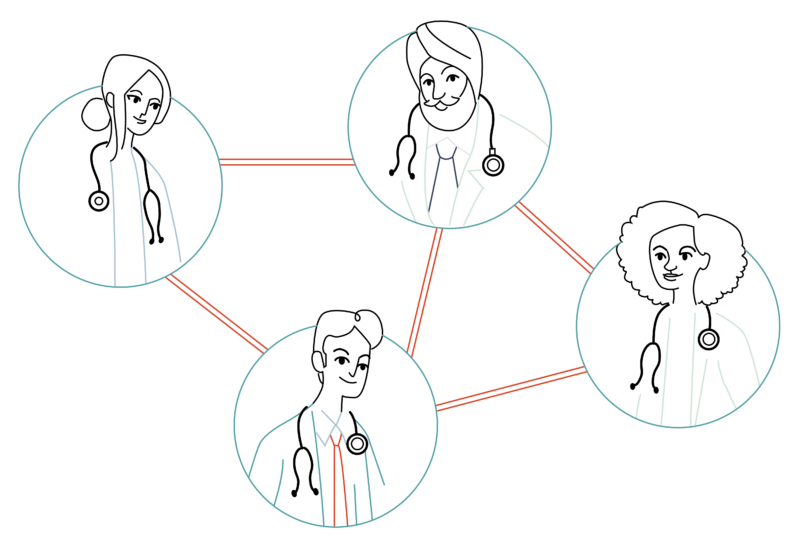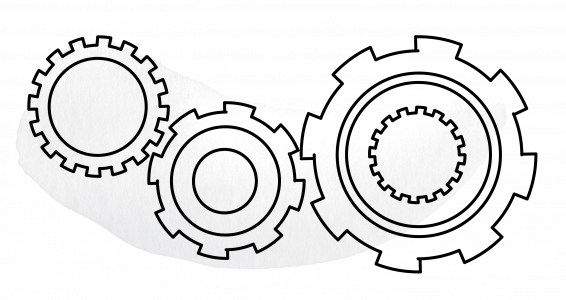The process of building a provider network is challenging. There is constant change in government regulations, a fast-paced competitive environment, and various information sources. Building a solid and profitable network requires the right strategy. The best network to build will depend on such things as your goals and member population, but network development strategy mistakes will prevent you from building a successful network.
Data inaccuracy is one of the biggest reasons why network development is broken. Inaccuracies in data result from issues such as the inability to aggregate data from multiple sources and a lack of data standardization. Another major challenge with network development is ensuring competitiveness in provider recruitment and operations while keeping up with the required network regulations. Here is a breakdown of some reasons why your network development may be broken so you can build strong and competitive systems going forward.

Accuracy of provider data
Health plans and hospitals rely heavily on provider data to ensure error-free business processes and to provide high-quality patient care. Accurate provider data is an important tool in, among other functions, detecting fraud, validating licenses and credentials, processing payments, and arranging for patient care. As a network builder, you must aggregate data from different sources and ensure that the data is accurate. Many organizations are, however, not keen on provider data accuracy regardless of how important it is for the development of a successful network. As many as 40% of provider records contain errors, according to research.
Some of the causes of data inaccuracy include:
- Human error in submitting and updating the system
- Lack of or limited expertise by health systems in maintaining the statuses of provider entities, such as limited knowledge on how to cleanse data by integrating traditional and non-traditional sources of information like public records
- Correcting records in only one provider directory and overlooking the rest
- Physicians who work for several locations or networks but only report for one
- Lack of data standardization systems
“
Health plans and hospitals rely heavily on provider data to ensure error-free business processes and to provide high-quality patient care.
”

Provider data is always in flux
The struggle to maintain an updated directory of providers also leads to a broken network development process. Provider data is constantly in flux. If you are not dealing with new providers entering a payor’s network, you are trying to keep up with providers who are leaving the network. You also have to keep up with the constantly changing and increasing data elements by different providers, which includes their demographics, locations, specialties, and licenses. Limited resources are one of the reasons why some health systems pass on checking the required sources for new or updated information.


Limiting network adequacy and other statutory requirements

Your network should meet network adequacy and other regulatory requirements. Network adequacy regulations ensure that your plan has enough providers so that people do not have to go outside your network which might cause them unreasonable delays in accessing medical care and higher medical costs.
A state’s network adequacy requirements can determine its market implications. If regulations require few providers, patients may struggle to get the healthcare they need. On the other hand, regulations that require too many providers make health plans less competitive as they may have to include some high-priced competitors. A health network’s affordability is critical to its success.
“
A health network’s affordability is critical to its success.
”

Non-standardized information-capturing process
Inconsistent data-gathering processes create confusion in health system networks.
Verified and consistent processes in healthcare provider network management create standardization and hence efficiencies within the caregiving system. Knowing the time taken for processes such as procuring an appointment or completing certain types of medical care reduces time wastage and increases consumer satisfaction.
Data standards also ensure that all providers use the same approach and language to share, store, and interpret information which aids interoperability (where health systems can exchange information regardless of the software provider). Some of these standardizations revolve around terminologies used, privacy and security standards, content standards, and data transport or exchange standards.

Marketability of solution and competition

Building a competitive network that enhances your online reputation and drives qualified leads through excellent customer experience is a challenge. Some networks fail when it comes to competing on cost, service quality, and meeting consumer interests.
Competition is stiff, and to keep up, you need to create a balance between scope, time, and resources. The scope of your network will depend on your competition and the prevailing regulations. You also need skilled resources to recruit, contract, and conduct credentialing for providers, all of which are difficult to source in a short time, especially if you have some time constraints. When you launch a network is critical to its success, as missing an open enrollment window will delay your ROI for a year.
A competitive network management system should provide consumer satisfaction through safe, timely, patient-centered, and equitable health care rather than measuring service effectiveness. You can also become more competitive by prioritizing providers who perform highly on the given parameters by giving them a higher volume of patients. One way to become more competitive is to think of the reasons why someone may choose to shift service providers — relocation, higher costs, providers no longer accepting coverage, lack of access to same-day appointments, virtual care, long wait times, or a general negative consumer experience, and make sure your network is competitive in these areas.
“
A competitive network management system should provide consumer satisfaction through safe, timely, patient-centered, and equitable health care rather than measuring service effectiveness.
”

Poor recruitment practices

The healthcare providers in your network are the backbone of your system. Having the highest, fool-proof selection criteria will keep you ahead of your competitors. Some poor recruitment practices include lack of personnel who are qualified in the recruitment process, lack of process to fulfill a recruitment need, and failure to use digitized technology.
One of the vital steps to recruitment is medical credentialing, which involves putting together files from each provider with details of their operational methods and only including providers that meet the highest recruitment standard as per your system. You can determine the best picks through automated performance data or evidence-based analysis. Credentialing also involves putting together the right mix of specialists that will strengthen your network.

Lack of digitized technology and systems
Running a business that is not digitized with the right kind of automation technology can make handling your network data a strenuous process. A provider network system should have modern, solution-giving IT systems that are regularly updated and maintained to ensure that data manipulation is fast and accurate. The ideal IT system should track provider service quality, costs, and other metrics automatically with little to no human intervention.

“
Running a business that is not digitized with the right kind of automation technology can make handling your network data a strenuous process.
”

Broken contracting process

Awarding high-stake contracts to providers who fail to deliver is a big downfall for your network. Healthcare contract management is difficult. Some of the challenges that you may face in the contracting process include lack of standardization in the contracting process and unclear contract terms. Solid contracts ensure that providers are paid on time and that they provide quality services to customers. Having a standardized process can help solve the contracting problem. Some suggested stages for contracting include making the initial request, reviewing the agreement, making corrections, approvals, and storage of the final document.

Not giving much thought to provider experience
Acquiring the right providers is an expensive, yet foundational part of a successful network. While health systems should consider factors such as aggressive discount plans and availability of services, other factors such as board certification and educational background should also come into play. Failure to consider a provider’s experience forces providers to focus on reimbursement only, which is uncompetitive.

“
Failure to consider a provider’s experience forces providers to focus on reimbursement only, which is uncompetitive.
”

Lack of Centralized Data
Provider data is often stored in different departments including compliance, claims, network management, and healthcare economics, making data integration difficult. Tracking and capturing some of the data also gets difficult when you are outsourcing some of the functions such as credentialing.
Lack of centralized data can result in, for instance, failure to detect credentialing errors. Uncredentialed providers who attend to patients may run an enterprise into litigation. Using centralized data systems, information can be stored in one mainframe but accessed from numerous points at the same time. Employing the right technology ensures you have all the data in one central place to confirm that critical processes such as credentialing are done right while you receive updates to information such as credentialing status.

How Can andros Help Address Network Development Challenges?
Challenges such as inaccurate provider data were once a small inconvenience. Not anymore, as health systems recognize the high costs of provider data inaccuracy such as exposure to lawsuits and increased healthcare costs which makes health systems less competitive. Health systems need to keep clean and accurate records. You need the right data partner with the resources, know-how, and technology to help you manage large volumes of data.
At andros, we create strong healthcare networks by focusing on data. We use millions of data points from medical claims, hospitals, and public records to provide you with a master provider referential database. By providing network adequacy, growth, and validation services, we can help you get in on the front lines. Our team can help you decide which products, memberships, and providers to offer based on aggregate data. Contact andros today to learn more about how we can help you overcome the challenges in your network development process.


